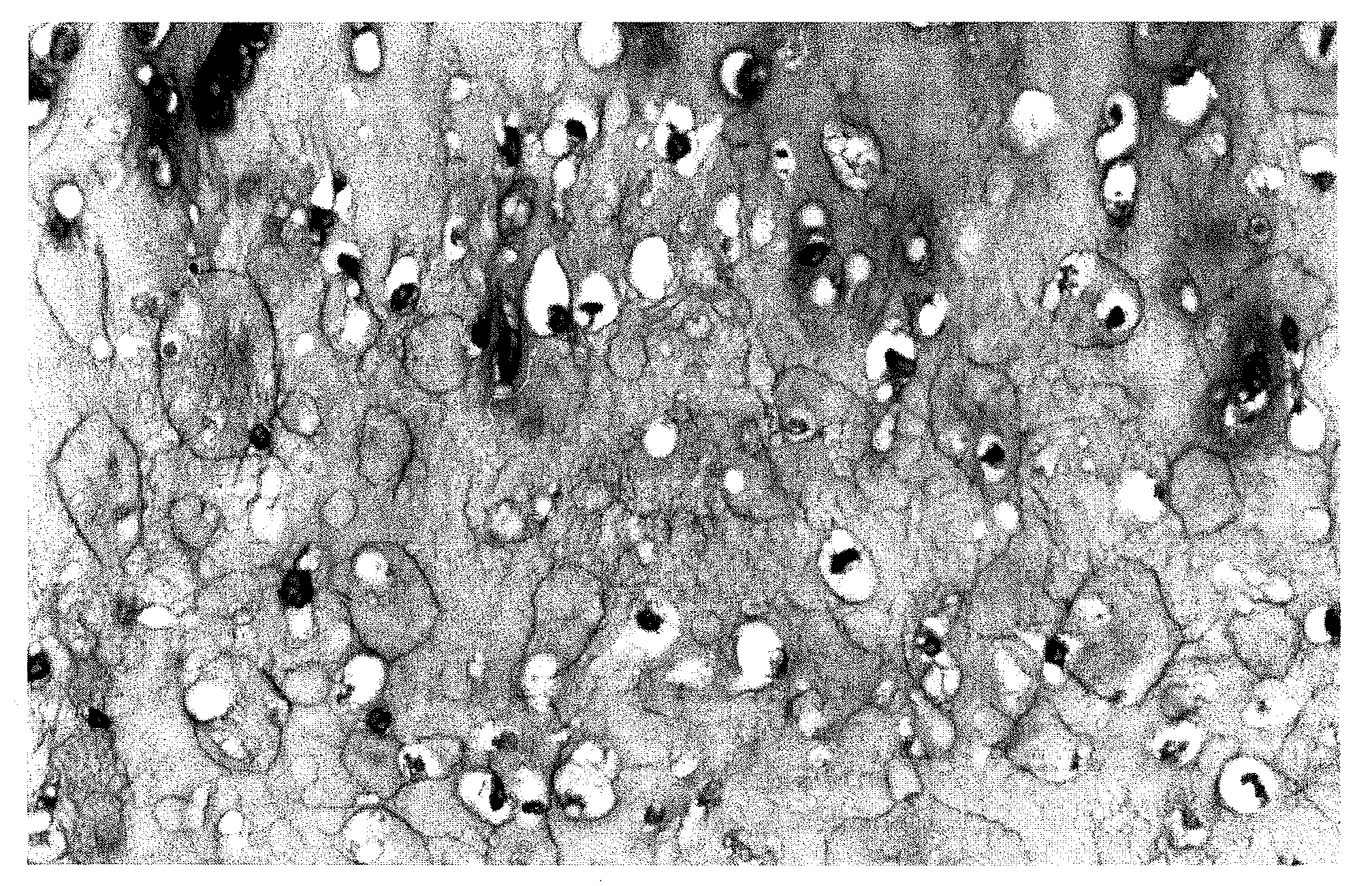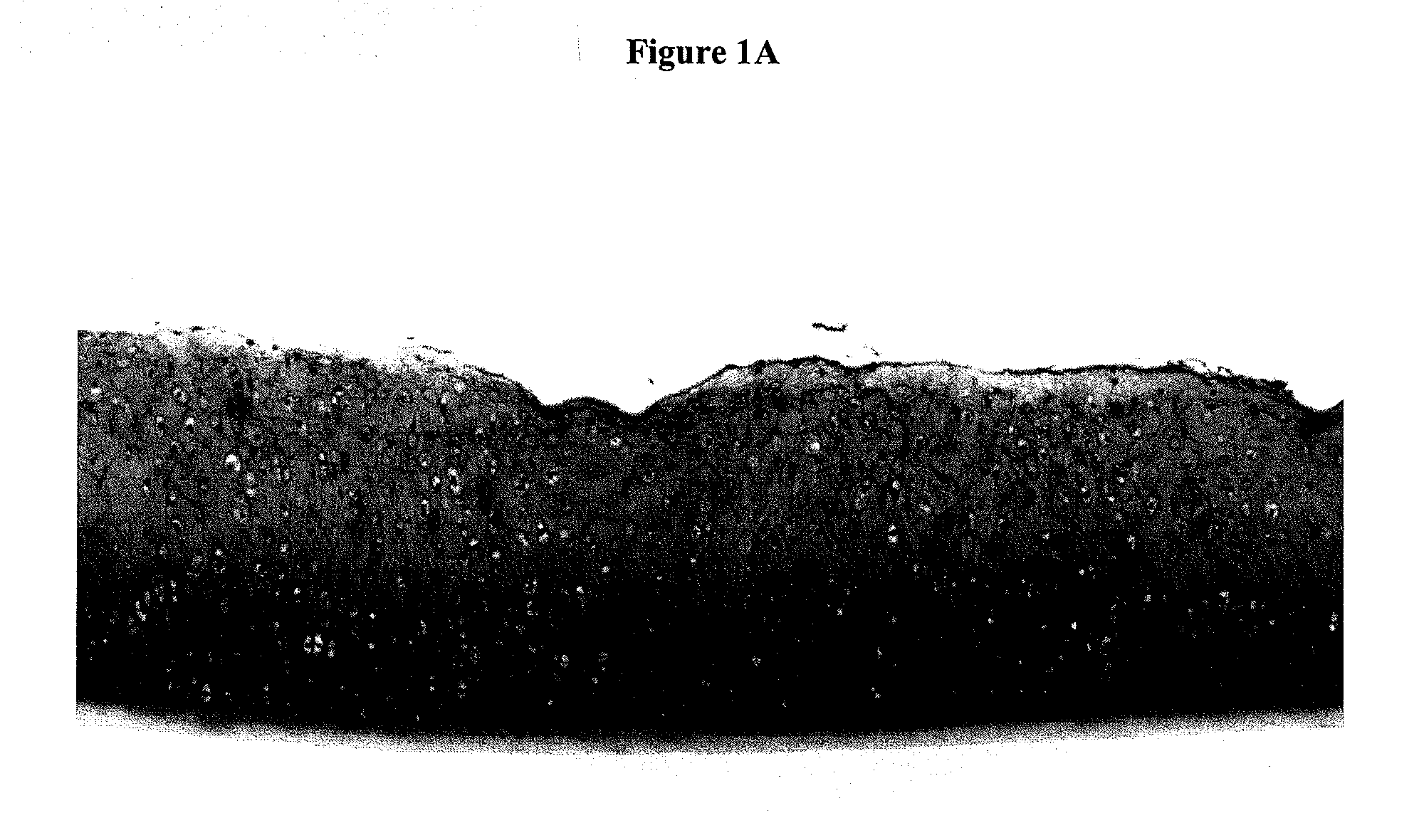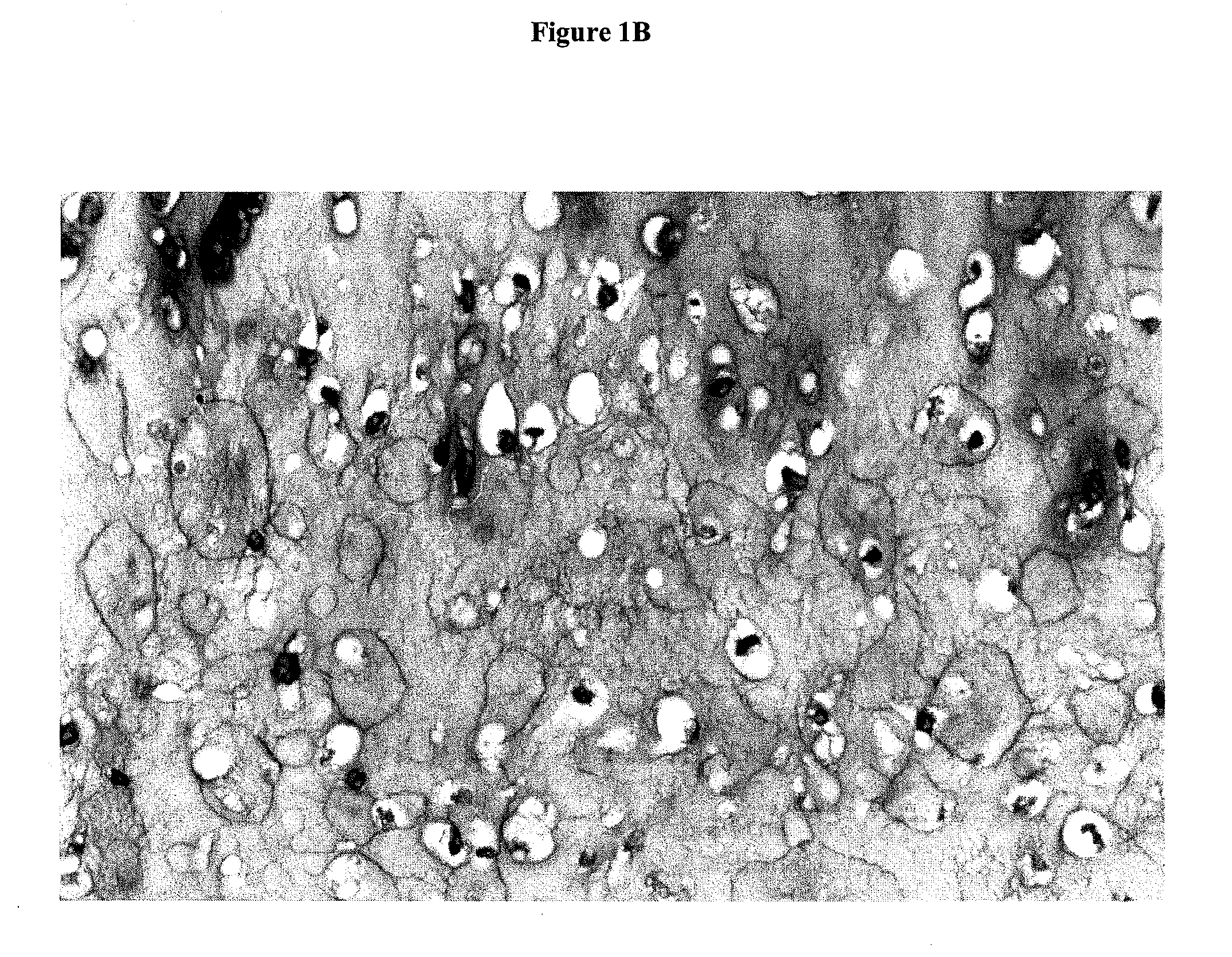Intervertebral disc
- Summary
- Abstract
- Description
- Claims
- Application Information
AI Technical Summary
Benefits of technology
Problems solved by technology
Method used
Image
Examples
example 1
[0082]The following materials and methods were utilized in the investigations outlined in the examples:
Materials and Methods
Cell Cultures
[0083]The lumber spines from up to 9 month-old sheep were removed. The muscle tissue was cleared from the ventral portion of the spine and then the ligamentous tissue surrounding the disc was carefully excised aseptically and discarded. The annulus fibrosus (AF) and nucleus pulposus (NP) were identified and the nucleus pulposus was dissected out with blunt forceps and placed in Ham's F12. The accuracy of the dissection was determined by submitting random tissue fragments for paraffin embedding and histological assessment at each harvesting.
[0084]The tissue underwent sequential enzyme digestion consisting of 0.5% protease (Sigma Chemical Co., St. Louis, Mo., USA) for 1 hr at 37° C., followed by 0.1% collagenase (Boehringer Mannheim GmbH, Indianapolis Ind., USA) overnight at 37° C. The cell suspension was then filtered through a sterile mesh and plat...
example 2
Formation of Disc Construct
[0106]The possible formation of a composite of nucleus pulposus tissue fused to cartilage which is anchored to the porous CPP was investigated. Articular chondrocytes were plated on the porous CPP discs and allowed to grow for 3 weeks. Simultaneously nucleus pulposus cells were grown on Millipore CM® filters as described above. At 3 weeks, a piece of nucleus pulposus tissue formed in vitro was punched out from the Millipore CM® filter and placed on the CPP-cartilaginous tissue construct that had been prepared. The tissue components were held together using fibrin glue and maintained in culture for 3 weeks. The composite was harvested and light microscopical examination of the processed constructs showed that substantial fusion of nucleus pulposus tissue with the underlying cartilaginous tissue occurred.
example 3
Generation of an Intervertebral Disc-CPP Biomaterial Construct
[0107]One half of an intervertebral disc fused to a cartilage endplate integrated with subchondral bone. To more closely mimic a natural disc, CPP will be generated with a central depression on its surface, the diameter of which will depend on the diameter of the CPP cylinder and with a depth of 0.5 mm. Articular chondrocytes can be isolated from sheep knee joint as described previously (Boyle et al, 1995) and plated in this depression. The cells will be grown under standard tissue culture conditions for 3 weeks during which time they will form cartilaginous tissue. Annulus fibrosus and nucleus pulposus cells will be isolated from sheep lumbar spine. The nucleus pulposus cells will be plated on filter inserts (Millicell CM®, Millipore Corp) and grown as described above for 4 wks (see Example 1). At 4 weeks the nucleus pulposus tissue formed in vitro has sufficient strength to be handled. The annulus fibrosus cells will be...
PUM
 Login to View More
Login to View More Abstract
Description
Claims
Application Information
 Login to View More
Login to View More - R&D Engineer
- R&D Manager
- IP Professional
- Industry Leading Data Capabilities
- Powerful AI technology
- Patent DNA Extraction
Browse by: Latest US Patents, China's latest patents, Technical Efficacy Thesaurus, Application Domain, Technology Topic, Popular Technical Reports.
© 2024 PatSnap. All rights reserved.Legal|Privacy policy|Modern Slavery Act Transparency Statement|Sitemap|About US| Contact US: help@patsnap.com










